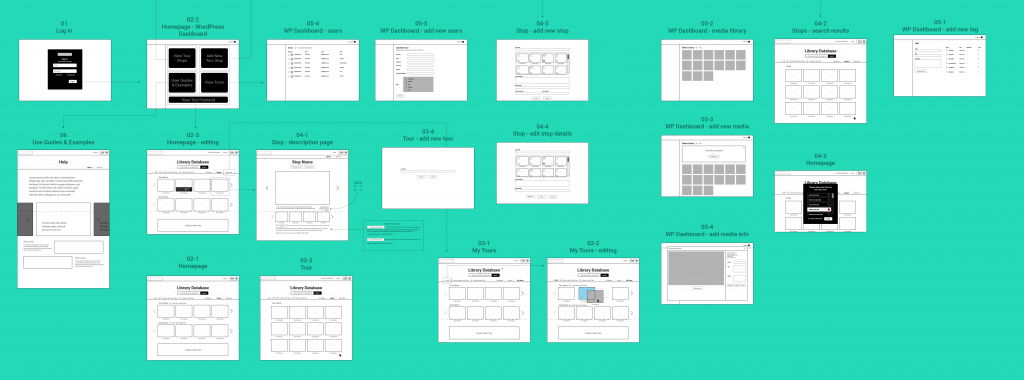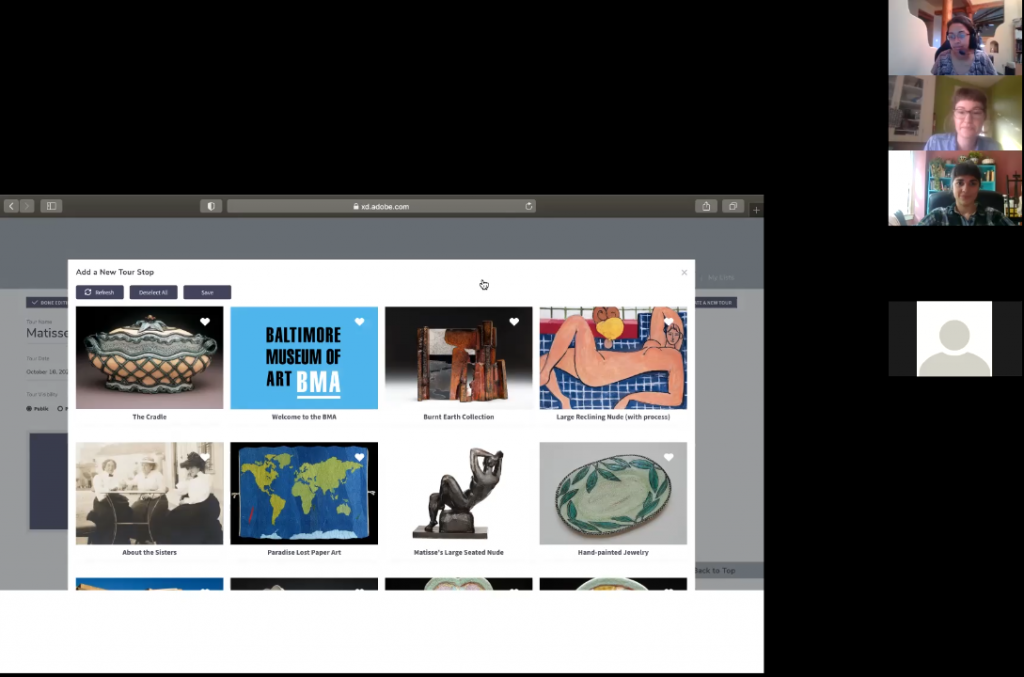Week 7: 1:1 meetings with each museum, Front-end systems, and Halves prep
Following the work put into ETSecrets, the team pushed forward to Week 7. Big goals milestones were to meet with each museum 1:1 as well as complete the Front-end and Dashboard MVP before halves.
Programming: Following our design meetings and mockups in week 5, we proceeded to build out the initial design for the front-end systems. While we waited for feedback on the mockups from the 1:1 meetings with each museum, we began implementing the Library page and Tour page. While the Library page would display ALL created tours, the Tour page would display just the Stops of 1 specific Tour. Visually, both pages were essentially identical except for buttons on the Tour page which would allow the user to add Stops to this specific Tour (after said stops were created in the Dashboard). While this would NOT be intuitive (“Why do I have to navigate between 2 separate UIs to make a single tour?”), we believed that users could be taught to navigate between the two separate spaces in order to make a tour. Additionally, this separation between front-end and Dashboard meant we could restrict certain users from making their own tours, a feature that was requested by Frick and Westmoreland given their larger teams. Since they have more staff, Frick and Westmoreland can divide the work of creating/curating guest events and programming from the actual work of presenting those prepared materials. For smaller and more collaborative institutions like Mattress Factory, Fallingwater, and AWAACC, they could simply give all employees the fully featured accounts vs. the limited accounts. The team felt that if the core functionality of creating a tour and presenting a tour could be completed by Halves, then the project could focus on documentation and graphic design in the weeks to follow.

Design: Design focused on preparing protocol and gathering feedback on the current website from each of the partners 1:1. Similar to the introductory meetings in Weeks 3 and 4, these “playtests”/demos served a dual purpose of feedback gathering as well as increasing buy-in from all partner museums. Unlike the previous meetings, we were only able to meet with 4 of the 5 institutions, with Westmoreland unable to weigh in on the updated user experience designs. Broad takeaways from these 1:1 meetings were as follows

- Museum staff understand the Dashboard with some explanation.
- Museum staff want to try making tours for themselves using the website
- Museums were eager to see how their brand could be communicated to their guests, beyond simple functionality.
- Museums appreciated the flexibility of the tool, even if it came at the cost of more complex features and narrow usage. All institutions had an existing structure and would be generally unwilling to change their workflows to integrate into an over-engineered tool.
- Learning the tool for the first time should not use documents. Staff really struggled to find a place to have the instructions visible while using the website for the first time.
Based on these conversations, the team began documenting these findings and communicating with Ana as to how the second half of the Semester could be spent.
Week 8’s goals revolved primarily around establishing future milestones for the second half of the Semester with Ana, giving our halves presentation, and planning future playtests based on the results of the former conversations.
Overall the website is in some level of functionality and appears to be going in the right direction (according to the museums we spoke to). The biggest challenges remaining would revolve around playtesting with actual museum staff in front of guests, creating documentation to enable initial onboarding onto the tool, and identifying the most important features to finish developing with the time we had remaining.
